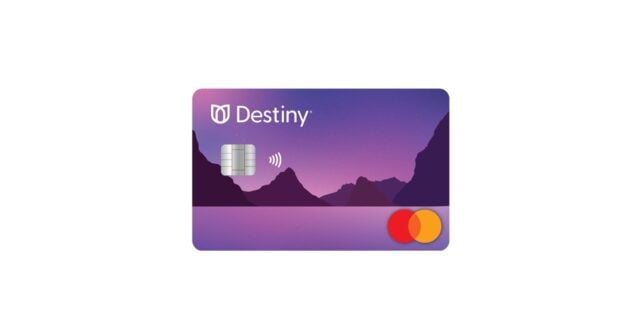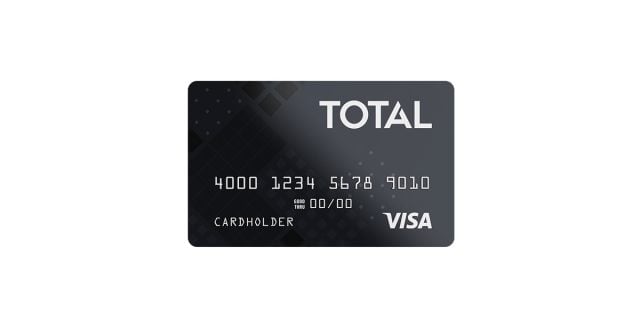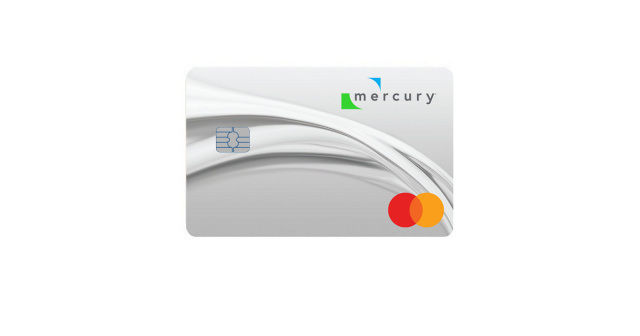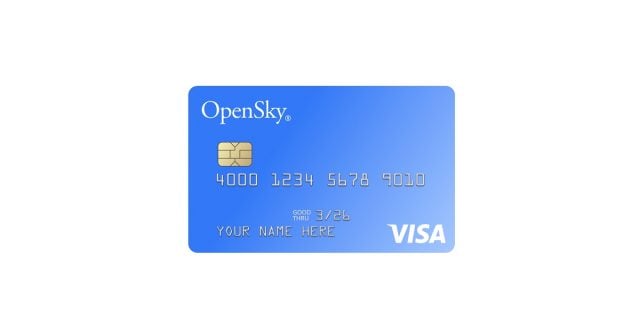by Cory Santos | Last updated on March 26th, 2024
Milestone® Mastercard®
Milestone® Mastercard®
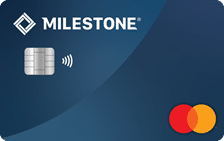
Milestone® Mastercard®
- See terms Regular Purchase APR
- See terms Cash Advance APR
At a Glance
Designed for folks with less-than-stellar credit (or no credit at all), the Milestone® Mastercard® credit card is issued by the Bank of Missouri. Featuring the benefits of a Mastercard credit card, it allows customers to access a convenient and valuable tool in their wallet.
- Best Benefits
- Rates & Fees
- Why Should You Apply?
- Greater access to credit than before - $700 credit limit
- Get a Mastercard accepted online, in store and in app
- Account history is reported to the three major credit bureaus in the U.S.
- $0 liability for unauthorized use
- Access your account online or from your mobile device 24/7
- Regular Purchase APR: See terms
- Cash Advance APR: See terms
- Cash Advance Transaction Fee: See terms
- Penalty APR: See terms
- Annual Fee: See terms
- Foreign Transaction Fee: 1% of the transaction in U.S. dollars
- Late Payment Penalty Fee: See terms
- Return Payment Penalty Fee: See terms
- Over Limit Penalty Fee: See terms
- You have low credit standing or have not yet begun your credit journey
- You want a credit card that reports to the three major credit bureaus
- You prefer the freedom of an unsecured credit card over a secured card
In-Depth Review: Milestone® Mastercard®
Establishing a positive credit history with unsecured credit can be challenging –especially if you don’t want a closed-loop store card. The Milestone® Mastercard® offers a straightforward, no-frills tool to help you meet your everyday needs and manage your spending. Plus, as an unsecured card, there’s no security deposit needed.
Milestone may not have the name recognition that larger credit card companies command, but with the power of Mastercard® behind the Milestone card, you can see why this company is fast becoming a household name for applicants with less-than-perfect credit.
How to Get the Card
Who Can Qualify for the Milestone Mastercard?
People with near-prime or subprime credit scores often struggle to find unsecured credit cards that aren’t store cards or merchandise cards. Options, like Milestone, Indigo, or Destiny, are designed for people with low credit scores or who have not yet established a credit profile. Milestone’s credit criteria are designed to help people who would like a credit card despite their credit standing (or lack thereof), but they cannot guarantee 100% approval.
Application Requirements
Applicants for the Milestone® Mastercard® must:
- Be at least 18 years old,
- Have a physical address (no PO Boxes allowed),
- Be a United States citizen,
- Have a valid Social Security Number (SSN). Applicants with an Individual Taxpayer Identification Number (ITIN) are not allowed.
- Have a valid US IP address,
- Not have had a Milestone Mastercard Account that charged off due to delinquency,
Additionally, applicants must meet additional credit qualification criteria, including a review of their income and debt, plus identity verification requirements.
Credit-Builder Benefits
Once approved, living with the Milestone Card is straightforward. Building credit starts by using the card responsibly. Make small purchases regularly and pay off your balance in full and on time each month. This demonstrates your ability to manage credit wisely. Also, avoid maxing out your card, as keeping your credit utilization low is essential for a good credit score. Finally, be patient and consistent, as building credit takes time. Monitor your credit report regularly to check for errors and ensure your positive payment history is reported accurately.
Cardholders who demonstrate responsible financial behavior may soon see their credit score rise, as Milestone will report card usage to the major credit bureaus each month. Milestone typically reports a few days after the cardholder’s statement billing period ends. To maximize your credit score, pay your balance in full each month.
Mastercard® Benefits
Milestone offers great dedicated resources to help cardholders navigate the world of credit, too. The Milestone card can be used towards cash advances (subject to credit approval) and purchases anywhere Mastercard is accepted. The Mastercard logo can be seen at more than 33 million locations in 210 countries worldwide. This is a big feather in the Milestone Mastercard’s cap, as an unsecured card rarely has this sort of purchasing power.
Cardholders also enjoy basic Mastercard benefits and protections. Like other subprime cards of this style, Milestone provides most of the features of Mastercard Platinum, meaning cardholders
- Mastercard ID Theft Protection™: Provides thorough identity monitoring covering your social security number, email addresses, debit cards, credit cards, bank accounts, usernames, and passwords for web logins, and much more.
- Zero Liability protection: When you use your Mastercard, have peace of mind knowing that you are not held responsible for unauthorized transactions.
Comparison
The Destiny Mastercard and Indigo Mastercard are two comparable cards to consider. Here’s how the three cards compare across key features:
Annual Fees
All three cards charge a variable annual fee, but only the Indigo Mastercard provides a no annual fee option for particularly qualified applicants. The annual fee with Indigo ranges from $0 to $99 per year, while both Milestone and Destiny feature an annual fee of $75 for the first year and $49 thereafter, though your particular offer may vary.
Starting Credit Limits
All three cards feature similar credit limits, but the Milestone Mastercard and Destiny Mastercard offer a higher starting credit limit for most applicants. These cards both provide a starting limit of $700, while Indigo provides a starting limit of between $300 and $1,000.
Before choosing your next near-prime credit card, carefully compare all aspects of the cards. Compare the terms and conditions of different credit cards to find one that aligns with your needs. Additionally, take into account any fees associated with each card and consider whether they are worth the benefits provided.
What We Like About Milestone
Improved Access to Credit Building
One of the standout features of the Milestone Mastercard is its potential approval for individuals with limited credit history or poor credit scores. The card features reduced credit requirements versus other offerings, which may be an option for those unable to secure approval for other unsecured credit cards due to their credit history.
Additionally, the card provides access to financial tools designed to help build or rebuild their credit history when used responsibly. By making timely payments and keeping credit utilization low, cardholders can demonstrate responsible credit management, potentially improving their credit score over time.
Things to Consider
Fees
The Milestone Card is like many subprime and near-prime credit cards, which may charge high fees. For example, the high annual fees can significantly impact the cardholder’s available credit limit, potentially reducing their purchasing power, as the full charge is due after you open your account and will reduce your starting credit limit until paid.
Additionally, the Milestone Mastercard imposes various additional fees, including over-the-limit, late, and returned payment fees, which can further add to the card’s cost.
FAQs
Here are some commonly asked questions about the Milestone Mastercard:
- The Milestone Mastercard comes with an annual fee that varies depending on the version of the card that you are approved for.
- You can use your Milestone Mastercard for purchases and cash advances anywhere you see the Mastercard logo, at over 33 million locations in 210 countries.
- The Milestone Mastercard has a $700 credit limit.
- Yes. All US residents aged 18 and up are eligible to apply for the Milestone Card.
Milestone Mastercard Ratings
How does Concora Credit Itc., the card’s servicer, stack up? Here is a selection of expert reviews for the card:
| BestCards | Better Business Bureau | TrustPilot |
|
4/5 |
|
1.5/5 |
Should You Apply for the Milestone Mastercard?
While the interest rates for the Milestone® Mastercard® are somewhat high compared to other credit cards, they are still competitive if you are unable to get approved for a different card offer. The card’s annual fees are competitive, too. The Milestone card offer is designed for people who may not be able to open an account for other secured cards.
There are plenty of excellent secured credit cards that don’t charge an annual fee, but if you’re worried you may not be eligible, the Milestone Card is a useful and worthy alternative. Many users who hold the credit card review their experience favorably.
At the end of the day, the Milestone Mastercard is a great option for consumers who have less-than-perfect credit and are looking for a simple and convenient payment card as they move towards a credit card offer with better terms and/or rewards. The application process is quick and easy and can be completed in minutes online.
The Mastercard benefits like Global Service and Airport Concierge also serve to set this card offer apart from its competitors. The card is a compelling option for those with a low credit score, similar to the Indigo Card from credit card issuer Celtic Bank. And, like the Indigo card, the Milestone credit card offers simple online payments, auto pay, and more, making it a great option to cover your expenses without additional headaches.
Browse Other Card Offers:
Editorial Disclosure – The opinions expressed on BestCards.com's reviews, articles, and all other content on or relating to the website are solely those of the content’s author(s). These opinions do not reflect those of any card issuer or financial institution, and editorial content on our site has not been reviewed or approved by these entities unless noted otherwise. Further, BestCards.com lists credit card offers that are frequently updated with information believed to be accurate to the best of our team's knowledge. However, please review the information provided directly by the credit card issuer or related financial institution for full details.

